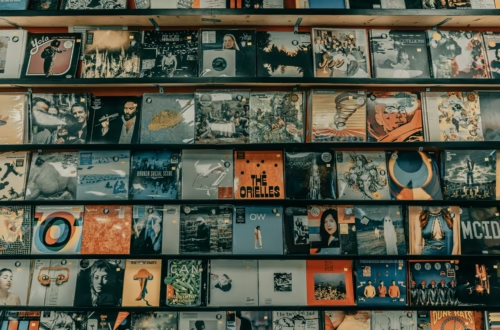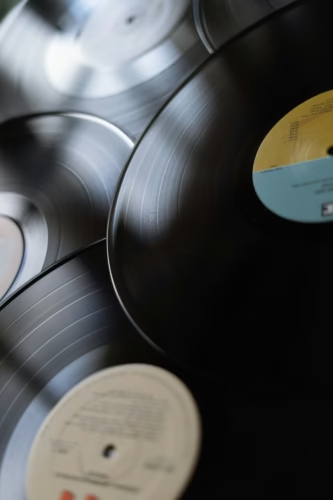Vintage Vinyl Collection: What draws so many individuals to the allure of vintage vinyl records, and what strategies should one employ to build their first collection effectively? The resurgence of vinyl records has proven not to be simply a nostalgic return to analog media, but a significant cultural phenomenon that transcends generations.
This fascination is not solely about the music itself, but the tangible experience of holding a record, admiring album artwork, and enjoying the warm, authentic sound that only vinyl can deliver. With the continuous growth of interest in vintage vinyl, whether due to its aesthetic appeal, unique acoustic qualities, or its role as a tangible collector’s item, enthusiasts new and old are entering a vibrant world rich with history and sentimentality.
The quest to build a vinyl collection that resonates with personal taste while holding potential investment value demands informed strategic planning. This article offers essential strategies to guide individuals on a journey to create a meaningful and rewarding vinyl collection. By understanding the historical context of vinyl records’ enduring appeal and examining current trends within the market, collectors can make informed decisions that shape their newfound hobby into a lasting passion.
Table of Contents
Historical Context of Vinyl Records
The journey through the history of vinyl records is a fascinating walk through time, bridging technological innovation, musical evolution, and changes in consumer culture. While earliest forms of recording technology trace back to Thomas Edison’s phonograph in 1877, it was Emile Berliner’s invention of the flat disc record in 1889 that paved the way for what we identify today as vinyl records. By the mid-20th century, vinyl had become the standard format for music release, primarily due to its superior sound quality and durability compared to earlier shellac records.
The Rise and Fall of Vinyl
The golden age of vinyl spanned the 1950s through to the late 1980s, where it was the primary medium for music consumption. This period saw the release of countless classic albums that have now become iconic and highly sought after by collectors. However, the arrival of the compact disc (CD) in the 1980s, promising portability and durability, marked a significant decline in vinyl production.
Despite this downturn, a revival began in the early 2000s, marking vinyl’s resurgence. Collectors began to appreciate the superior sound quality of vinyl records and the unique experience they offered. Today, vinyl is embraced once more, not just by nostalgic buyers, but by a new generation discovering this timeless medium.
Current Trends in the Vinyl Marketplace
Understanding current trends is essential to make informed decisions when building a vinyl collection. The vinyl market today is characterized by a mix of reissued classics, new album pressings, limited editions, and an active used market. Modern collectors are discerning, seeking records that provide not just music, but also a piece of history or cultural significance.
Increasing Popularity and Diverse Offerings
According to the Recording Industry Association of America (RIAA), vinyl sales have consistently risen over the past decade, reaching levels unseen since the 1980s. This renewed interest has encouraged both major and independent labels to issue vinyl pressings of new releases, alongside reissues of classic albums. This abundance of offerings allows collectors to embrace diverse music genres in their collections. Vinyl pressing plants have also responded by producing high-quality records designed to appeal to the audiophile community.
The Role of Limited Editions
Limited edition pressings have become particularly attractive within the collector community. These records often feature colored vinyl, unique artwork, or are presented as part of a special edition package. While they can be more costly, their limited availability often makes them a more valuable addition to any collection.

Key Concepts and Definitions in Vinyl Collecting
Embarking on the quest to collect vinyl involves familiarizing oneself with a few critical concepts and terminologies specific to the field. Understanding these terms helps new collectors navigate the vast array of options and ensures they make informed decisions regarding purchases.
Condition Grades and the Importance of Quality
The condition of a vinyl record, both visually and audibly, significantly influences its value. Collectors use a grading system, typically ranging from Mint (M), Near Mint (NM), Very Good Plus (VG+), Very Good (VG), Good Plus (G+), and down to Poor (P). Mint condition represents a flawless record, while those in Very Good condition may exhibit some wear but still offer decent sound fidelity.
Strategies for Building a Vintage Vinyl Collection
To successfully establish a vinyl collection, one must approach the process with a well-thought-out strategy. This involves identifying personal musical preferences, understanding market dynamics, and applying specific tactics to enhance the collection’s quality and value.
Setting Goals and Determining Budget
Before diving into collecting, setting clear goals is paramount—whether the objective is to gather a comprehensive selection from a particular era, amass certain genre-specific records, or simply collect personal favorites. Establishing a constrained budget is crucial, as the costs associated with purchasing records can quickly escalate.
Research and Knowledge Gathering
The foundation of a great collection is in-depth research. Reading up on iconic albums, understanding the history of influential artists, and familiarizing oneself with various record labels contributes to a more refined selection process. Online resources, collector forums, and publications dedicated to vinyl culture are valuable assets for building knowledge.
Exploring Different Purchase Platforms
Vinyl records can be acquired from several sources, each with its unique benefits and considerations:
Record Stores: Local stores offer the advantage of physical inspection. Speaking with knowledgeable staff and fellow enthusiasts can provide insights and recommendations.
Online Marketplaces: Platforms like Discogs or eBay offer a vast selection. Buyers must exercise caution, ensuring sellers have a positive reputation and offer returns if necessary.
Flea Markets and Garage Sales: Often hiding unexpected gems, these venues provide opportunities for budget-conscious buying but require a keen eye to spot high-quality records.
Prioritizing Quality Over Quantity
While it can be tempting to accumulate a vast number of records quickly, prioritizing quality over quantity often yields a more satisfying collection. Acquiring records in excellent condition, focusing on well-regarded pressings, and fulfilling specific collecting goals can lead to a more cohesive and valuable assortment.
Maintenance and Storage
Proper care and storage are essential to preserve a collection’s quality. Storing records vertically, using protective sleeves, and maintaining a stable temperature environment prevents warping and deterioration. Regular cleaning ensures the longevity of the records’ sound fidelity.

Comparing Different Points of View
There are varied approaches to vinyl collecting that reflect different perspectives and priorities among enthusiasts. Below are comparisons of five common viewpoints:
| Approach | Focus | Pros | Cons |
|---|---|---|---|
| Nostalgic Collectors | Sentimental value and classic albums | Emotional connection and timeless pieces | Potential lack of diversity |
| Investment-Minded Collectors | Records with appreciation potential | Financial gain | Risk of market fluctuations |
| Genre-Specific Collectors | Depth within a single genre | Deep expertise and cohesive collection | Potentially narrow focus |
| Eclectic Collectors | Diverse genres and artistic expressions | Varied collection and discovery freedom | Less focused and may be inconsistent |
| Audiophiles | High fidelity pressings and sound quality | Superior audio experience | Higher cost for premium equipment |
Impact Assessment of these Approaches
Each viewpoint carries its own set of impacts, both on the collector and the market as a whole. Nostalgic or genre-specific collectors might foster a deeper connection with their collection, while investment-minded collectors may add to the inflation of market prices. Eclectic collectors contribute to a broader appreciation of music diversity, and audiophiles frequently push for advancements in pressing techniques and audio equipment innovations.
Future Directions and Implications
Looking towards the future, several trajectories highlight how the vinyl market and collecting community may evolve.
Predicting Clickstream Growth
Given current trends, it’s predicted that the interest in vinyl will continue to grow. As younger generations increasingly discover the distinct qualities of record listening, demand will likely persist or even rise. This could prompt an uptick in vinyl production techniques and the development of hybrid media forms that integrate digital and analog experiences seamlessly.
Societal Impact and Collectibility
The renewed interest in vinyl records underscores a broader societal movement towards valuing tangible, authentic experiences over digital transience. This trend is reflective of a cultural shift towards slowing down, savoring the moment, and appreciating craftsmanship—a mindset that is becoming increasingly prevalent in other areas, such as the resurgence of film photography and analog watches.

Conclusion
In summary, building a vintage vinyl collection involves meticulous research, strategic purchasing, and a genuine passion for music. From the rich history of vinyl records to current market dynamics and emerging trends, collectors are positioned at the crossroads of nostalgia and modern appreciation. As individuals traverse this journey, informed and strategic choices will enrich their experience and ensure the longevity and enjoyment of their collections.
Does this detailed exploration into collecting vinyl records resonate with your vision for a rewarding pursuit in vintage media? By adhering to these essential strategies and embracing a mindful approach to collecting, one can cultivate a vinyl collection that stands as both a testament to personal taste and a valued musical archive. Engaging with this vibrant community can lead to a fulfilling hobby opening new realms of sound, history, and artistry.
What advice would you give to one starting a vinyl collection?

